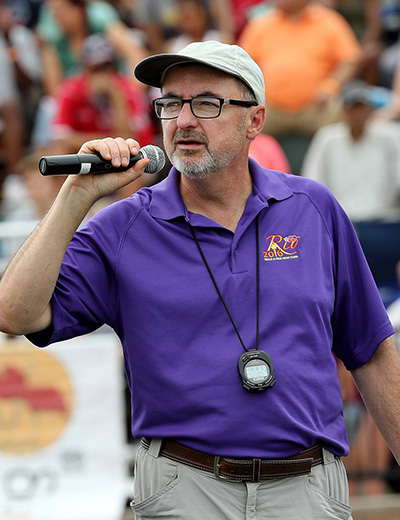
ON THE EDGE of my seat I was as Jakob Ingebrigtsen and Yared Nuguse raced to the line and broke 3:44 for the mile at the DL Final in September. And I am thrilled every time I get to see Faith Kipyegon line up, simply because I know she will always deliver a performance that leaves me speechless.
True confession time: on the whole I find the distance races we see on the Diamond League circuit to be, well, a tad predictable, if not downright boring. I will even go farther and say that applies to the vast majority of races outside of championship events. Sure, fast times are fun — I’m a statistician at heart — but, to use a drama analogy, if the script is always the same, are you going to remain passionate about going to the theater?
These days, between rabbits and the growing use of Wavelight technology, the script is quite predictable. The pace is set — usually to the tune that top runner has asked for — and the field sets off in single file, gradually thinning until the rabbit steps off and we watch the top runner try to get ahead of the wavelight. If the runner can’t keep up, which is usually, we’re disappointed. Occasionally they beat the target, and we’re thrilled.
I wonder how many potential fans feel cheated when they tune into televised meets and see the commentators and the production focused mostly on the very slim chance of a World Record that is so rarely delivered? Every race can’t be a record, and it’s crazy for our sport to keep trying to sell that.
Every race could, however, be an actual race, one where we are not sure who’s going to make it to the finish line first. Championship racing, without rabbits and wavelights, is really the only place you see such competition at a high level. The drama is there because suspense is there. Consider Jakob Ingebrigtsen lining up for a DL race. Is he going to win? Almost assuredly, because that’s the script. But Ingebrigtsen on the line of a championship 1500? Count on huge suspense, thrilling races and unlikely winners; Jake Wightman and Josh Kerr, to name a couple.
We’re all fans here, and as a fan, I’d love to see more tactical distance racing. I just wish we didn’t confine it to championship meets.
I certainly understand that other fans feel quite differently. I was privileged in my early days at Track & Field News to sit near one of our founders, Cordner Nelson, at a number of big meets. Cordner, who understood tactical racing better than anyone — he wrote The Milers after all — absolutely hated seeing 1500 runners jogging the first few laps in a championship setting. If there were a few 3:32-type runners in the race, he wanted to see them racing hard and going for 3:31. He felt cheated if the race devolved into a free-for-all sprint on the final lap as no one came anywhere near their best times.
Over the years I have met a vast number of fans who agree with Cordner on this point, and I’m not going to say they’re wrong. They’re in good company. As an occasional meet announcer, I have felt the electricity that surges through a crowd when I announce a record. There’s no denying the thrill that comes at those moments.
I guess it all comes down to a fan’s prerogative to like what we like. I just happen to like the kind of racing where the winner is in doubt until the very end, where you don’t need to look at the time to know that you saw a great performance.
I’m enough of a realist to know that it’s kind of like yelling at the weather to say I wish we had more tactical racing on the big-time circuit. It’s not going to happen anytime soon. However, I’m going to keep watching anyway, in the hopes that somewhere in this non-stop flow of rabbited and wavelighted time trials, perhaps a race might break out. It happened, after all, for Ingebrigtsen and Yared Nuguse even with the tech and pacemakers in Eugene.